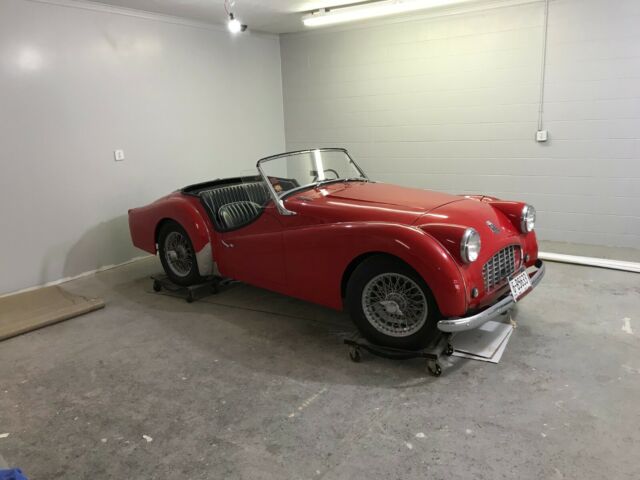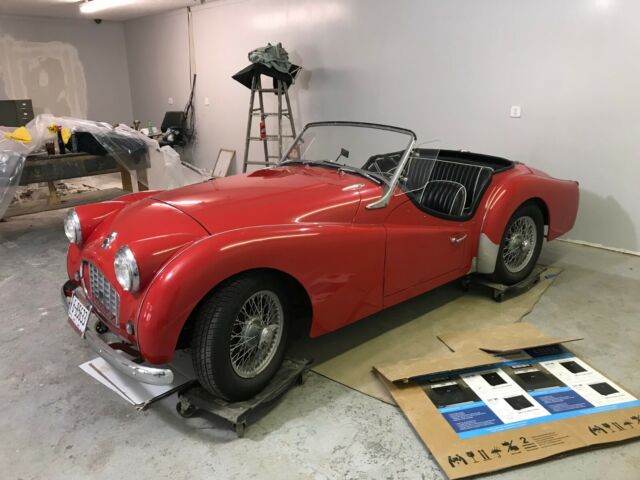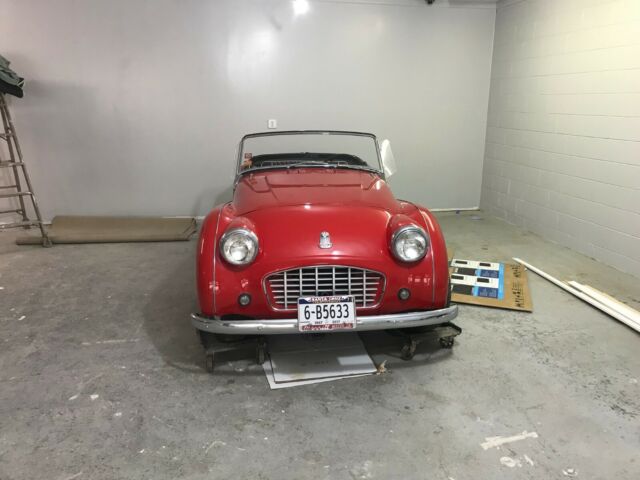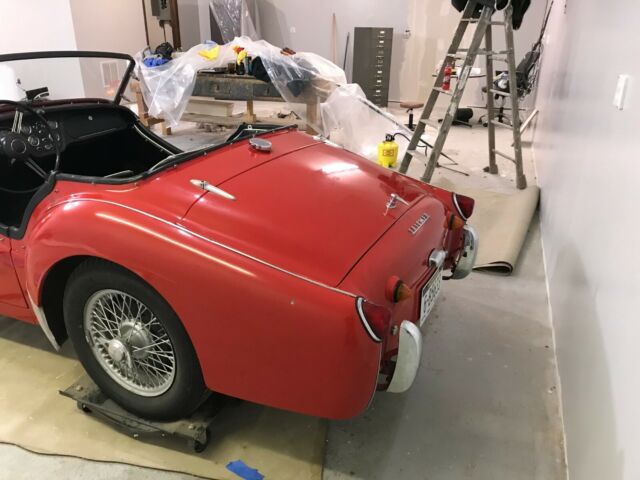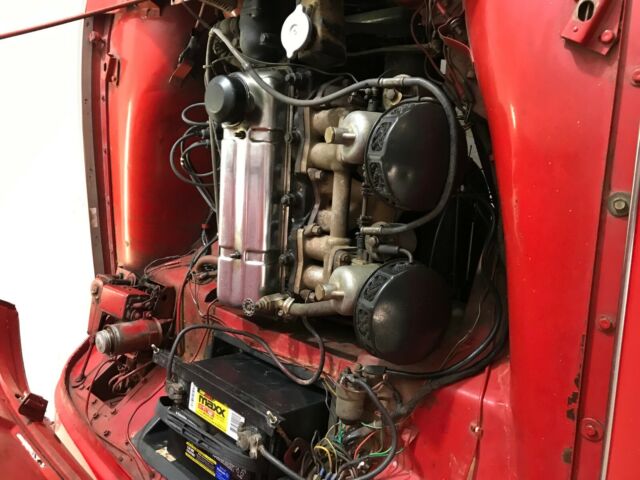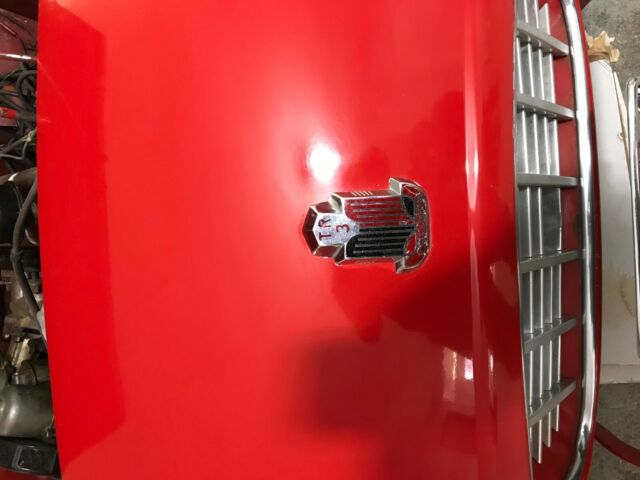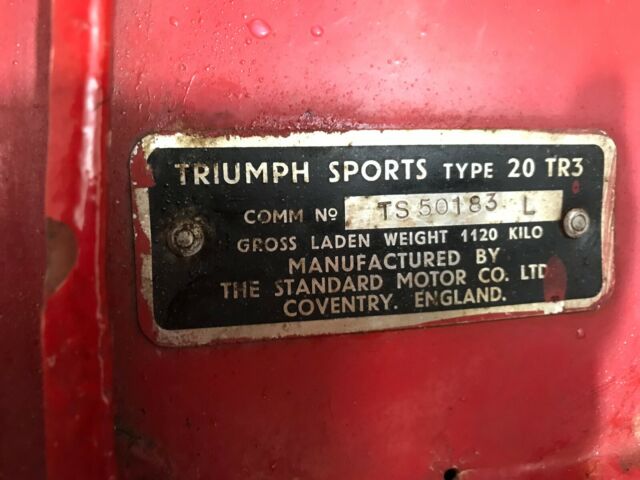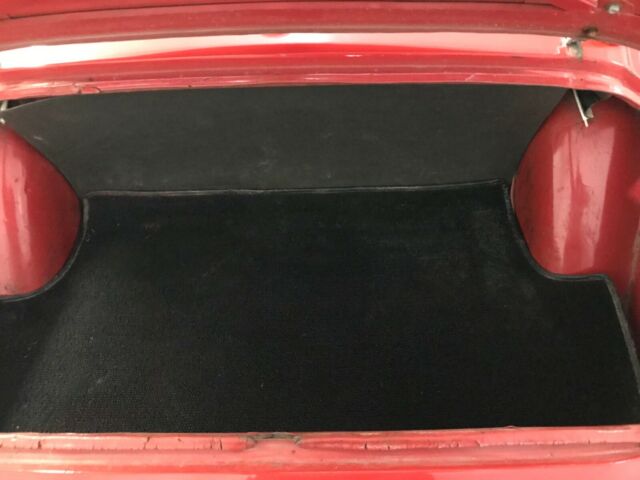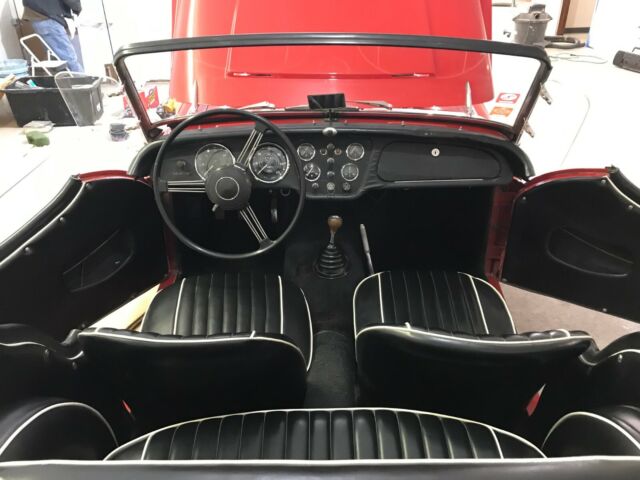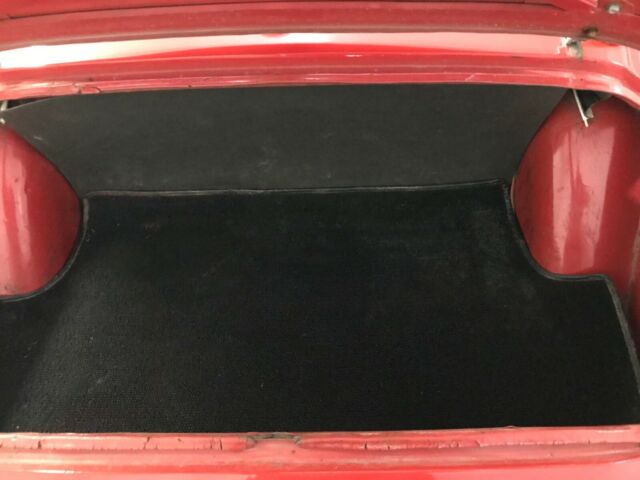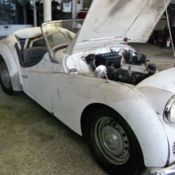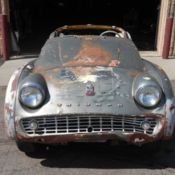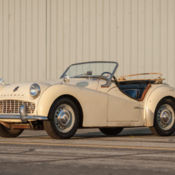1959 triumph tr3 roadster
Technical specifications of Triumph TR3 1959
| Price: | US $18,900.00 |
|---|---|
| Condition: | Used |
| Item location: | Fremont, Nebraska, United States |
| Make: | Triumph |
| Model: | TR3 |
| Type: | Convertible |
| Trim: | tr3a |
| Year: | 1959 |
| Mileage: | 46977 |
| VIN: | ts50138l |
| Color: | Red |
| Engine size: | 4-cyl. 1991cc/100hp 2x1bbl |
| Number of cylinders: | 4 |
| Transmission: | Manual |
| Drive type: | RWD |
| Interior color: | Black |
| Drive side: | Left-hand drive |
| Options: | Leather Seats |
| Vehicle Title: | Clear |
| You are interested? | Contact the seller! |
Description
Selling this for a friend who has had it for the last 40 year, he was the second owner of the car .And bought it from a General that lived if Omaha Nebraska at the time and was stationed at offutt air force base. Car has never seen the harsh winter of nebraska because it has always been garaged indoor in climate control building .The Triumph Motor Company launched the TR3 in October of 1955 as a successor to the TR2, and the new model was powered by the same 1991 cc, straight-4, overhead valve engine as its predecessor. The powerplant had larger carburetion, however, that pushed power to 95 hp, and the engine was mated to a four-speed transmission. New cylinder heads were fitted to the engine during the first 12 months of production, which translated to 5 more hp, and top speeds for the TR3 approached 110 mph.The car utilized front independent suspension and a live rear axle, and initially had drum brakes on all four wheels. Within the first year, however, Triumph switched to front disc brakes, becoming the first production British car to do so.
Externally the car had low-cut doors and minimal weather protection, which underscored its purposeful, sporting nature. It had a small opening in the front with a deep-set grille that did not compare favorably to competitors like the MGA and Austin-Healey 100. Performance was on par, though, and the car was well received. More than 13,000 TR3s were manufactured between 1955 and 1957, with 90% of those landing on American shores.
Popular optional equipment for TR3s included overdrive, a hard top, and wire wheels. A handful of buyers opted for the occasional rear seat as well.
Triumph executed a visual freshening in 1957, and the cars are now referred to as the TR3A, though the company never officially named this evolutionary model as such. Most significantly, the car's grille grew wider and became less recessed. Also, headlight treatment was slightly altered, door handles (available on the earlier cars via a "GT Kitâ€) became standard, a locking trunk handle appeared, and larger bumpers were installed. Mechanically, most of the TR3's original spec remained. The public responded favorably to the new appearance by purchasing more than 58,000 TR3As during the car's six-year run. Again, the vast majority of these vehicles were destined for the U.S. market.
By 1961, Triumph was preparing its radically new TR4, but American dealers were uncertain about how this new offering would be received commercially. To address these concerns, Triumph created the final iteration of the TR3 to safeguard against public disinterest. The TR3B (again, never referred to as such by the company) was produced during the 1962 model year, and was externally identical to the TR3A. Underneath, though, the car carried the B's optional 2138 cc inline-4 that produced 105 hp. The car also had a new synchromesh gearbox.
The TR4 indeed proved to be quite successful, so the TR3B was retired following 1962. The TR3 today is remembered as a model that helped establish Triumph as a leading producer of open two-seat sports cars - a reputation the company carried through the 1970s.
">The Triumph Motor Company launched the TR3 in October of 1955 as a successor to the TR2, and the new model was powered by the same 1991 cc, straight-4, overhead valve engine as its predecessor. The powerplant had larger carburetion, however, that pushed power to 95 hp, and the engine was mated to a four-speed transmission. New cylinder heads were fitted to the engine during the first 12 months of production, which translated to 5 more hp, and top speeds for the TR3 approached 110 mph.
The car utilized front independent suspension and a live rear axle, and initially had drum brakes on all four wheels. Within the first year, however, Triumph switched to front disc brakes, becoming the first production British car to do so.
Externally the car had low-cut doors and minimal weather protection, which underscored its purposeful, sporting nature. It had a small opening in the front with a deep-set grille that did not compare favorably to competitors like the MGA and Austin-Healey 100. Performance was on par, though, and the car was well received. More than 13,000 TR3s were manufactured between 1955 and 1957, with 90% of those landing on American shores.
Popular optional equipment for TR3s included overdrive, a hard top, and wire wheels. A handful of buyers opted for the occasional rear seat as well.
Triumph executed a visual freshening in 1957, and the cars are now referred to as the TR3A, though the company never officially named this evolutionary model as such. Most significantly, the car's grille grew wider and became less recessed. Also, headlight treatment was slightly altered, door handles (available on the earlier cars via a "GT Kitâ€) became standard, a locking trunk handle appeared, and larger bumpers were installed. Mechanically, most of the TR3's original spec remained. The public responded favorably to the new appearance by purchasing more than 58,000 TR3As during the car's six-year run. Again, the vast majority of these vehicles were destined for the U.S. market.
By 1961, Triumph was preparing its radically new TR4, but American dealers were uncertain about how this new offering would be received commercially. To address these concerns, Triumph created the final iteration of the TR3 to safeguard against public disinterest. The TR3B (again, never referred to as such by the company) was produced during the 1962 model year, and was externally identical to the TR3A. Underneath, though, the car carried the B's optional 2138 cc inline-4 that produced 105 hp. The car also had a new synchromesh gearbox.
The TR4 indeed proved to be quite successful, so the TR3B was retired following 1962. The TR3 today is remembered as a model that helped establish Triumph as a leading producer of open two-seat sports cars - a reputation the company carried through the 1970s.
1959 Triumph TR3A Info- 0" >
- Body Styles
- 2dr Hardtop Coupe
- 2dr Roadster
- 0" >
- Engine Types
- 4-cyl. 1991cc/100hp 2x1bbl
